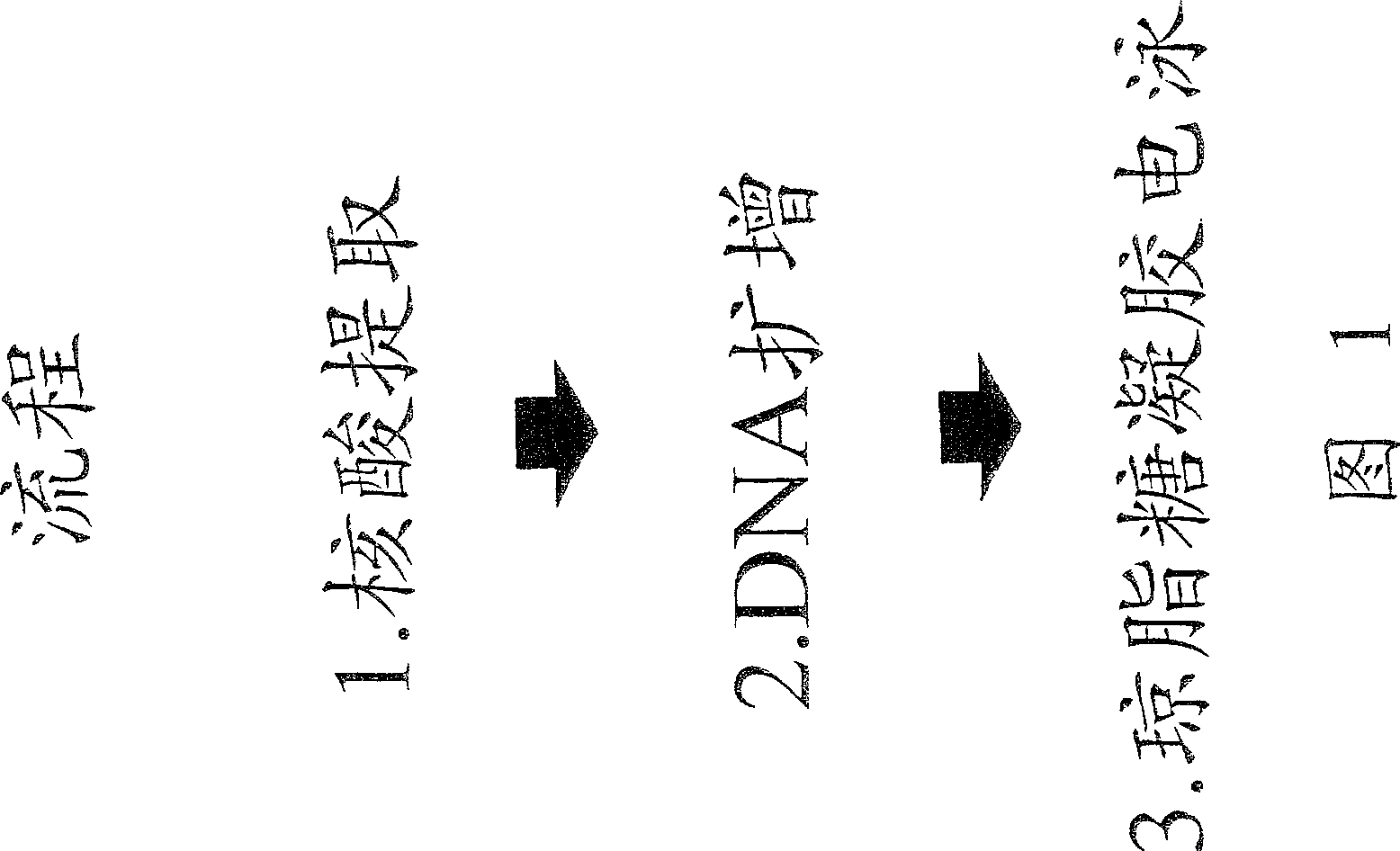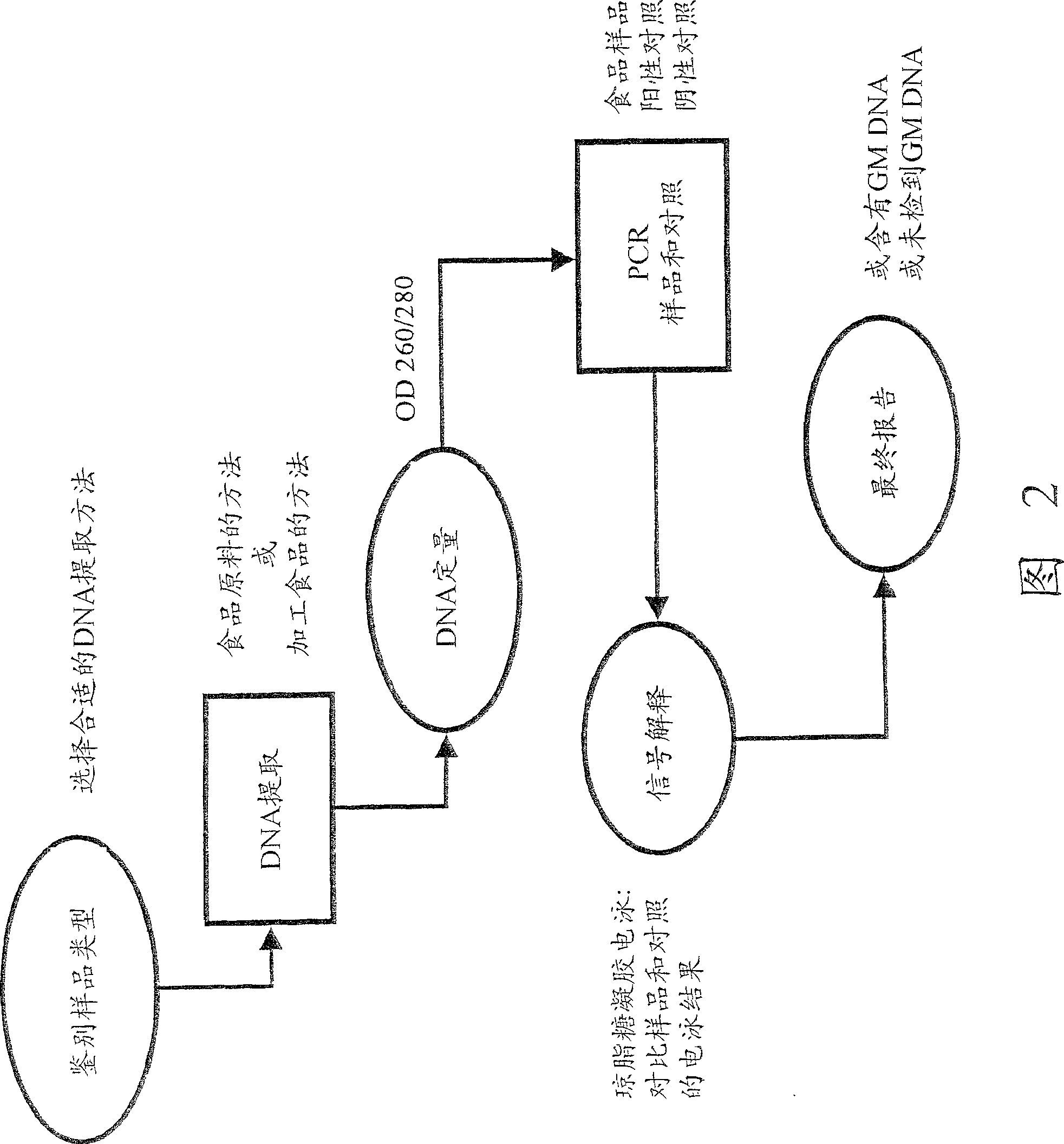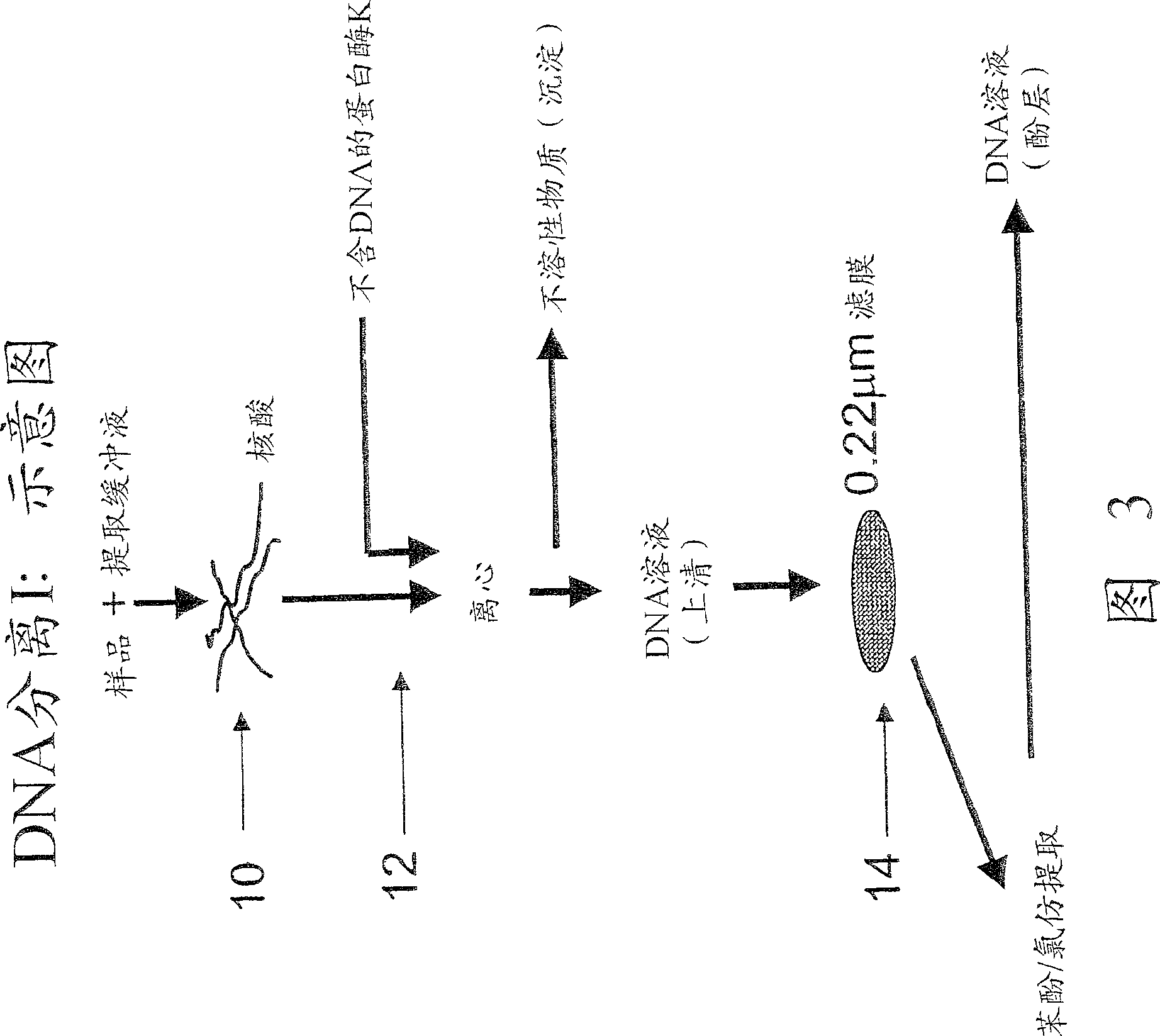DNA extracting method and use thereof in detecting transgene component in food
A technology of genetically modified ingredients and samples, applied in the field of DNA extraction, can solve problems such as the quality cannot meet the requirements, and achieve the effect of high quality
- Summary
- Abstract
- Description
- Claims
- Application Information
AI Technical Summary
Problems solved by technology
Method used
Image
Examples
Embodiment 1
[0052] Example 1. Amplification and detection of cauliflower mosaic virus 35S promoter sequence in transgenic food
[0053] Materials and methods
[0054] 1. Samples: Soybeans (USA), soybeans (Mexico), cup noodles 1, cup noodles 2, bag noodles 1, bag noodles 2 and soybean milk (Hong Kong) used in the present invention are all commercially available products.
[0055] 2. Reagents:
[0056] DNA extraction reagents:
[0057] Buffer A: 10 mM Tris HCl pH 8, 150 mM NaCl, 2 mM EDTA. 1% SDS.
[0058] Buffer B: 5M Guanidine Hydrochloride
[0059] PCR Super Mix
[0060] Element Stock solution concentration Final concentration PCR buffer 10× 1× MgCl 2 50mM 2.1mM DNTPs 10mM 0.2mM
[0061] Wherein, the PCR buffer is a commonly used Tris-HCl buffer.
[0062] Taq polymerase: purchased from Invitrogen USA.
[0063] Primers: purchased from Invitrogen USA, the sequences of which are shown in SEQ ID No.1 and 2 in the sequence listing.
[0064] ...
Embodiment 2
[0076] Example 2. Amplification and detection of Agrobacterium tumefaciens nopaline synthase (NOS) terminator
[0077] The DNA extraction method and PCR amplification and detection method are the same as in Example 1. The samples are 1. Seasoning powder 1, 2. Seasoning powder 2, 3. Seasoning powder 3, 4. Seasoning powder 4, 5. Bowl of noodles 1, 6. Bowl of noodles 2, 7. Instant macaroni noodles, 8 . Instant Macaroni. The primers used therein are shown in SEQ ID Nos.6 and 8. The positive control was changed to IRMM410 * . The negative control was DEPC water. The result is as Figure 7 shown. The result is that samples 5. Bowl of noodles 1, 6. Bowl of noodles 2, 7. Instant macaroni noodles, and 8. Instant macaroni noodles have positive 146bp bands. It shows that there are genetically modified ingredients in these foods.
Embodiment 3
[0078] Example 3. Amplification and detection of neomycin phosphotransferase II (NPTII) sequence
[0079] The DNA extraction method and PCR amplification and detection method are the same as in Example 1. The samples used are 1. rapeseed oil 1, 2. rapeseed oil 2, 3. rapeseed oil 3, 4. rapeseed oil 4, 5. rapeseed oil 5. The primers used therein are shown in SEQ ID Nos.11 and 14, and the positive control is IRMM410. The result is as Figure 8 shown. The result was a positive band of 194bp in samples 3 and 4, indicating that there were genetically modified ingredients in these two foods.
PUM
 Login to View More
Login to View More Abstract
Description
Claims
Application Information
 Login to View More
Login to View More - R&D
- Intellectual Property
- Life Sciences
- Materials
- Tech Scout
- Unparalleled Data Quality
- Higher Quality Content
- 60% Fewer Hallucinations
Browse by: Latest US Patents, China's latest patents, Technical Efficacy Thesaurus, Application Domain, Technology Topic, Popular Technical Reports.
© 2025 PatSnap. All rights reserved.Legal|Privacy policy|Modern Slavery Act Transparency Statement|Sitemap|About US| Contact US: help@patsnap.com



